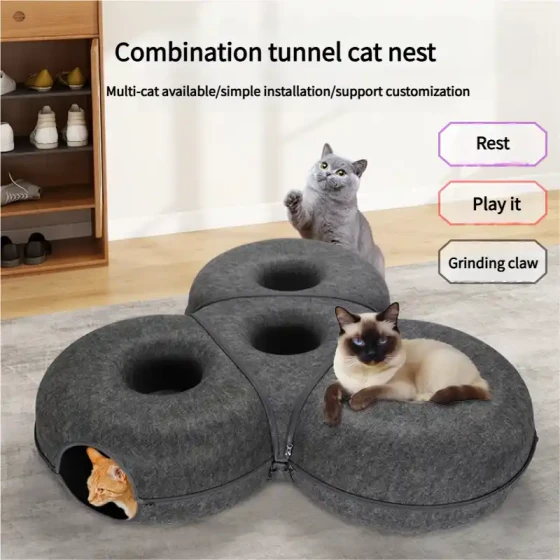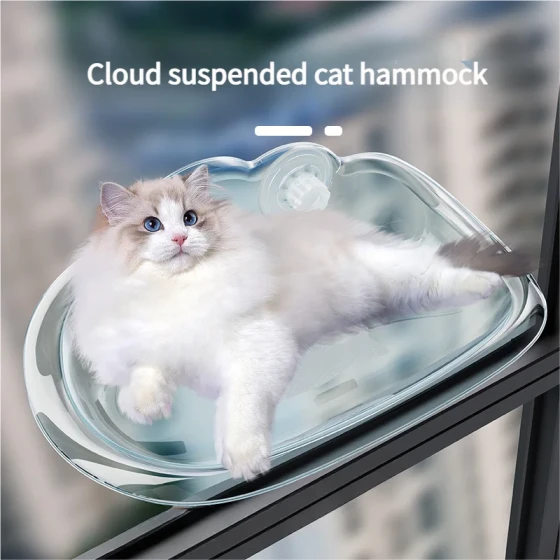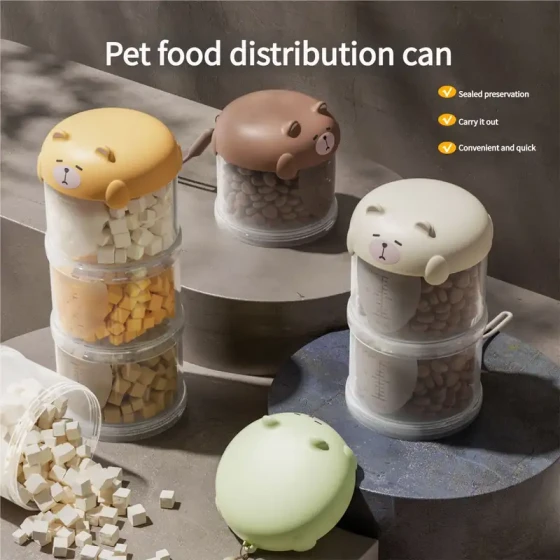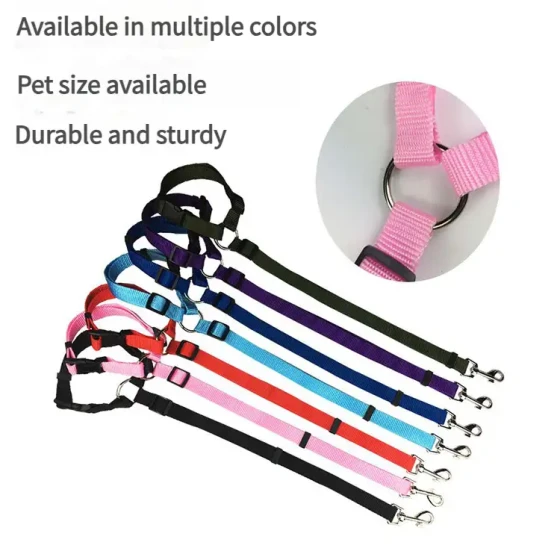How Often Should Indoor Deworming for Cats Be Done_Full Guide to Deworming Cycles
How often should indoor deworming for cats be done? This seems like a simple question but actually involves a lot of knowledge and cannot be answered with a one-size-fits-all approach. If you just want a rough idea, the standard answer is: adult cats that rarely go outside should be dewormed internally about once every 3-6 months; cats that go outside often or even hunt should be dewormed monthly. Kittens require more frequent treatments, usually from a few weeks old, dewormed every 2-4 weeks until 6 months old.

But this is only a basic framework, like a suit pattern that looks good only if tailored properly. The world of parasites is much more complex than we imagine; they infiltrate everywhere, even hitchhiking on your shoe soles or delivery boxes to sneak into what you think is a fortress-like home. So, understanding the underlying logic is key to truly building a healthy barrier for your feline master.
Parasite's "Survival Way": Why Can't Deworming Stop?
You may wonder, my cat stays indoors all the time, eating and going to the bathroom right under my watch, so how could there be parasites? This is where the problem’s subtlety lies. Internal parasites, like common roundworms, hookworms, and tapeworms, are transmitted in ways far beyond “eating dirty things.”
First, mother-to-offspring transmission is the most common way kittens get infected with roundworms. Larvae can be passed through the placenta or milk, so almost all kittens are assumed to carry roundworms by default, which is why kittens need more frequent deworming fundamentally.
Secondly, environmental contamination is the huge uncontrollable factor. Parasite eggs can be expelled in feces and scattered into soil, grass, even dust. When we come back from outside daily, shoe soles and clothing may carry these tiny “uninvited guests” inside. Cats licking their fur or paws, or just rolling on the floor at home, may inadvertently ingest the eggs.
Furthermore, the existence of intermediate hosts complicates matters. For example, fleas are intermediate hosts for tapeworms. If a cat ingests fleas carrying tapeworm larvae while grooming, it becomes infected. Even purely indoor cats might get fleas through various channels. Hunting (even small insects or mice) also poses parasite risks.
Understanding these, you see that deworming is not only “treating” existing infections but an important preventive measure. Regular deworming aims to eliminate parasites before they multiply extensively, cause serious damage to the cat’s health, or even spread to humans.
Deworming Cycle: Not a Fixed Rule
The answer to “how often” should be based on a “risk assessment” of your specific cat. Key factors include:
- Age:
- Kittens (usually under 6 months): Kittens are especially vulnerable to parasites and commonly infected maternally. Organizations like the International Society for Companion Animal Parasites (ESCCAP) recommend starting internal deworming at 3 weeks old (some suggest 2 weeks or 4-6 weeks) and repeating every 2 weeks until 8 weeks old. Then monthly until 6 months to cover different parasite life stages.
- Adult cats (above 6 months): This group shows the greatest variation in deworming frequency.
- Lifestyle:
- Indoor-only cats: If the cat never goes outside and there are no other outdoor-exposed pets at home, theoretically the infection risk is lower. Recommended deworming frequency is generally once every 3-6 months. But remember, indoors is not absolutely safe—parasite eggs and fleas brought in from outside remain potential threats.
- Cats with outdoor access (balconies, yards, occasional walks): Once in contact with the outdoor environment, parasite infection risks greatly increase. Recommended deworming frequency rises to once every 1-3 months.
- Cats frequently outdoors and hunting: These cats easily become infected with tapeworms and other parasites by catching infected prey like rodents. Veterinarians typically advise monthly internal deworming.
- Multi-cat households or catteries: Close contact increases parasite transmission risks and may require more frequent deworming or regular fecal examinations.
- Geographic location and season: Certain parasites are more prevalent in specific areas or seasons (e.g., warm and humid times), influencing recommended deworming frequencies.
- Diet: Cats eating raw meat or bones have significantly increased parasite risks and should have more frequent deworming, even monthly.
- Fecal test results: Regular or symptom-triggered fecal exams are the most direct way to detect parasite infections. Based on results, vets provide precise deworming advice. Sometimes fecal exams can substitute but may miss parasites outside ovulation periods; collecting multiple days of samples or increasing exam frequency is recommended.
- Type of deworming medication used: Different drugs vary in duration and parasite coverage. Some target both internal and external parasites; others only internal. Unique effective intervals exist for each product—strict adherence to labeling or vet guidance is essential.
So, the opening “standard answer” is just a starting point. A more responsible approach is to combine the above factors and discuss with your veterinarian to develop a personalized deworming plan that best suits your cat.
Pre-Deworming "Investigation": How to Tell if Your Cat Might Have Parasites?
While we emphasize preventive regular deworming, recognizing parasite infection symptoms is also crucial to help you detect problems early and shorten intervals or seek treatment when needed. Common symptoms include:
- Digestive issues: Vomiting, diarrhea (possibly with mucus or blood; hookworm infections may cause black stool), reduced appetite or increased appetite with weight loss.
- Body changes: Enlarged abdomen (especially in kittens, called “pear-shaped belly”), yet thin body and delayed development.
- Anal discomfort: Cats may drag their bottoms on the floor, possibly infected with tapeworms, as tapeworm segments (looking like rice grains or sesame seeds, hardened when dry) shed from the anus and cause itching.
- Poor coat condition: Rough, dull fur.
- Anemia: Pale mucous membranes, possibly caused by blood-feeding parasites like hookworms or whipworms.
- Seeing worms in feces or vomit: Usually indicates a severe infection. Roundworms look like long thin noodles; tapeworm segments resemble rice grains.
- Respiratory symptoms: Some parasite larvae migrate through the lungs causing coughing, such as roundworms and heartworms.
However, please note, many parasite infections are hidden with no obvious signs, especially mild infections. This reinforces the importance of regular deworming—don’t wait for signs to appear before acting.
Final Word: Deworming Is a Necessary Lesson in Scientific Pet Care
The internal deworming cycle for cats is not an arbitrary or ignorable number. It is a scientifically managed system based on parasite life cycles, individual cat differences, and environmental risk. Neglecting deworming can cause long-term parasite suffering, affecting nutrient absorption, growth, and even threatening life, and may pose zoonotic risks to family health, especially vulnerable children or immunocompromised individuals.
Therefore, don’t get hung up on rigid numbers—understand the logic behind them. Build good communication with your vet to tailor a reasonable and effective deworming plan according to your cat’s unique traits and living environment. This is the truly responsible and caring way to raise pets. Regular deworming is not only for your cat’s digestive health but for the welfare of the whole family.

-560x560.webp)



